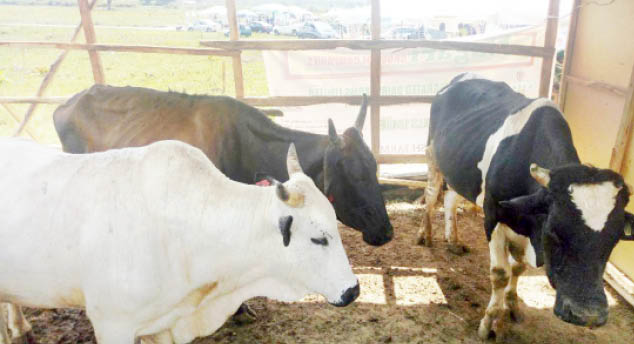New people join farming every year. I therefore keep getting the question on which is the best species of livestock to keep between cattle, sheep and goats.
Some individuals will enquire about rabbits or even unconventional livestock like ostrich.
However, the three conventional species still remain the champions of enquiry.
It is interesting that when the country’s economy takes a deep dive, as it has currently or did during the coronavirus pandemic, farming enquirers exponentially increase.
- Service for sale: How police commercialise security operations amid manpower shortage
- Breaking the glass ceiling: Women in journalism and Nigerian example
I came to learn during the peak of the pandemic that one driving factor was because many people realised farmers were being allowed to travel during the quarantine since the government classified them as essential service providers.
People have also come to realise that food is a commodity that the population must use at all times, regardless of the status of the economy.
The only thing that changes is the quantity and varieties that people buy.
Expensive foods like broccoli, dragon fruit, butter, choice meats and cheese are shunned by a majority during tough economic times.
The consumption of everyday foods like ordinary meat, eggs and milk may even shoot up during pandemics and hard economic times because their high nutrition level enables households to consume them frequently but in small quantities.
It has also dawned on many people that livestock farming can be a wealth-builder if started small and scaled up over time, especially where land and water are in abundance.
So, what informs a potential farmer whether to keep cattle, sheep or goats?
First, I will state that cattle – whether dairy or beef – are very difficult and expensive to keep.
The main cost centres for cattle farming are space in form of land feed, capital for starter stock, labour, water and veterinary services.
If the space available for livestock farming is limited, even waste disposal becomes a costly affair.
Cattle produce a lot of manure that is used for the production of human food crops and fodder for livestock.
Where land is in plenty, the manure is mostly not even enough for food and fodder production.
With the rapid trend of urbanisation and the legalisation of urban agriculture, many families are keeping cattle on very small pieces of land such as one eighth of an acre.
It should be noted that urban livestock farming on small pieces of land presents a big challenge of manure and other waste disposal.
Cattle can produce approximately 30 kilogrammes of dung each day, working out to about 11 tonnes a year.
That is enormous volume of waste to deal with on a small piece of land.
A farmer should therefore have a good plan of manure disposal if establishing a farm on a small piece of land.
Such plans include having a separate piece of land for growing fodder or food crops or selling off the manure to other livestock farmers.
Farmers also need to know that waste includes biological matter, including dead animals and birth materials like placenta.
These types of material are classified as hazardous biological waste that must be disposed of by deep burying or incineration.
In addition to heavy waste production, cattle are high-volume feeders.
A single cow needs to eat 30 to 40 kilogrammes of wet feed material and drink 40 to 70 litres of water every day.
A lot of labour is required for feeding the cattle, cleaning their sheds, milking in case of dairy cows and delivering the milk to the market daily.
Veterinary care is also needed in routine disease prevention activities and when the cattle get sick.
Cattle consume medicines and vaccines in huge quantities because of their large size. Cattle farming may be done in a variety of environments as long as adequate space and the sources of feed and water are assured.
The most appropriate source of feed and water is on the farm or nearby areas.
If one relies heavily on long distance commercial acquisitions, the farming is unlikely to be profitable.
Dairy cattle should preferably be kept in areas with cool climate while most beef animals are better suited for warmer climate.
The availability of workers and market for milk and beef should also be put into consideration.
Sheep and goats, collectively known as shoats, are widely regarded as the “poor man’s cow”.
Their requirements are far less and cheaper than those of cattle.
It should, however, be noted that the productivity of shoats is much lower than that of cattle.
They compensate to some extent due to their shorter reproductive cycles and their ability of multiple offspring in one birth.
Potential farmers should consider the peculiar feeding habits of sheep and goats individually and the preference of the market for mutton, chevon or goat milk by the target consumers.
Mutton refers to sheep meat while chevon is the meat of goats.
Sheep milk is virtually unknown in Kenya while goat milk has a very low market.
Milk market availability is therefore not a major consideration in shoat farming.
The two species of livestock are mainly kept for meat and prestige.
Goats and sheep, on all accounts are much cheaper to keep than cattle.
Most goat breeds do better in warm climates.
SOURCE: Seed of Gold (NATION)

 Join Daily Trust WhatsApp Community For Quick Access To News and Happenings Around You.
Join Daily Trust WhatsApp Community For Quick Access To News and Happenings Around You.



